Volt Misses Another Goal: Battery To Discharge Deeper Than Planned
Although the finished product works well enough, it’s also becoming increasingly apparent that the Volt missed two key project goals. GM’s oft-stated promise that the Volt would achieve 50 mpg in CS mode is history. The fact that GM felt the need to optimize the fuel consumption of the Volt by using premium (required, not just recommended) indicates how rather inefficiently its serial-predominant hybrid system works. It’s not a matter of ragging on about that; it’s just a surprise to those of us who argued endlessly which system (serial or parallel) was more efficient.
And now another long held Volt assumption is deflated. Based on GM statements made during the Volt’s long development, the universal understanding was that the Volt would use 8 Kwh of its 16 Kwh battery pack to achieve its 40 mile AER goal. It now turns out that 10.4 Kwh will be utilized. Sounds like small potatoes, but there are three not insignificant consequences as a result:
The Good, The Bad And The Ugly: Some European Perspective On The Chevy Volt
We live in annoyingly ideological times, in which people get worked up about gay marriage, Christopher Bangle, or what religion their neighbor belongs to. This is foreign to me. If it works for you, then go for it, I always say. You like some wheels, you buy ’em; if you don’t, don’t.
So, it’s hard for me to understand what the fuss is about the Chevrolet Volt. It’s just a car, for Pete’s sake! On the other hand, I am a notorious gearhead and can appreciate the importance of what seems to be a totally new automotive concept. It’s new, but does it point toward the future? Let’s discuss it.
Voltonomics 101: Your Costs Will Vary – Calculate Them Yourself Here
My initial self-appointed assignment was to come up with a comprehensive cost analysis of the Volt in comparison to the Prius and other vehicles. I first took this on two and a half years ago, and the results from that gazing-into-the crystal-ball exercise are actually still remarkably accurate, except for the Volt failing to meet its then-promised 50mpg fuel economy. The task, given the infinite variables, is essentially impossible, and thankfully, I was forwarded a link to this Electric Car Calculator. It’s far from perfect, given that it doesn’t account for depreciation, finance costs, leasing, maintenance, etc. What it does do is allow you to input your driving regime, both weekdays and weekends, electric and gas costs, and come up with a comparison for overall fuel costs with your choice of another vehicle; a good start:
Snake Oil Alert: The "Tasty" 600 Km EV
You know that something is a fad when A) it’s bubbling on the stock market or when B) snake-oil salesmen tout the newest revolution, and regular folks actually start believing them.We’re not quite there yet with “A)”, but check out what I call an exhibit for “B)”.
Quote Of The Day: From Our Cold, Dead Hands Edition
Payback Is A Bitch: Mazda's ICE Challenges Hybrids
When someone tells you “you’ll save a lot of money,” always ask: “How much will it cost me?” New technology that saves you a lot of money usually comes with a nasty habit: It costs a lot upfront. With a car, you are faced with the dilemma whether to pay Big Car now or Big Oil later. I never forget when I was a young copywriter and I had the task of launching the first diesel powered Golf. I extolled its prudence at the pump and its longevity. Whereupon a grizzled old guy at the advertising department of Volkswagen said: “That thing is expensive. You need to drive 80,000 km to get your money back. By that time, the engine will fall out of the car.” (VW had some corrosion issues back when.) That introspection was triggered by two events: Ed is in Michigan, he has a date with the Volt. His mission: Find out when you will get your money back. Then there’s Mazda, which did something utterly boring, but likewise highly exciting.
Saab 9-4X: The Heavier Cadillac SRX
Built on GM’s “Theta Premium” chassis alongside its Cadillac SRX sister in Ramos Arizpe, Mexico, the Saab 9-4X crossover is less than completely Swedish but more than just a rebadged SRX. Specifically, at a base curb weight of 4,431 lbs (with GM’s 3 liter V6 driving the front wheels), it’s over 200 lbs more crossover than a base SRX.
Porsche Promises Across-The-Board Hybrid Options
Porsche has made much of its hybrid drivetrain development efforts, pointing out that its founder helped create the world’s first hybrid drivetrain one hundred years ago. But thus far, the talk has centered on Porsche’s “rolling hybrid laboratory,” the 911 GT3R Hybrid, and the Hybrid Cayenne, with the plug-in 918 Hypercar lurking across the horizon. But, Porsche’s development chief Wolfgang Duerheimer tells Automotive News [sub]
In the future, we will have hybrid drive in every model line
First up will be a Panamera with the Cayenne’s hybrid V6 drivetrain, arriving sometime next year. Duerheimer won’t give a timeline for hybrid versions of the 911, Boxster and Cayman, but he does admit that hybrid drivetrains aren’t the only way for a sportscar firm to shave off the 41 grams of C02 per kilometer that Porsche needs gone by 2015.
The Toyotafication Of The British Sports Car Brands
Aston Martin’s decision to sell a worked-over Toyota iQ has raised some serious questions for “brand values” advocates across the internet of late. Does an aristocratic sportscar brand need to take on the problems of urban congestion and carbon intensity? Does the Cygnet’s noblesse oblige PR value outweigh the furor of countless Aston Martin aspirants at the thought of their beloved brand becoming a glorified Toyota tuner house? The answer to both of these questions is apparently yes…
Ask The Best And Brightest: Sell Me on The Chevy Volt
TTAC’s long been used to playing the “heel” of the auto journalism world, and sure enough, our skeptical approach to the Chevy Volt is already renewing accusations that TTAC “hates GM.” For the record, this accusation doesn’t fly. We have the tendency to obsess on GM because that company’s rise and fall is the most compelling story in the automotive world. To read GM’s history is to watch a person claw their way up a cliff by his bootstraps, and upon reaching the top, spend the next several decades strangling himself with the very same bootstraps. I challenge anyone who is interested in the world of cars to look away from that.
In any case, our Volt coverage has focused thus far on dispelling myths, so in the interest of seeking the truth everywhere, I thought we should take a moment to make a few Volt myths of our own. After all, despite planning to build only “10-15k” Volts next year and 60k in 2012, Automotive News [sub] says
Chevrolet is taking its message to a mass-market audience with television commercials during World Series broadcasts.And even though my personal and professional obligations to the truth make me the worst marketing candidate ever, I may just have an idea of where to start…
Ranger Regrets
What's Wrong With This Picture: Land Of The (Stop-Start) Free Edition
Motor Trend Reveals The "Secret" To Getting 127 MPG In A Chevy Volt
EPA Approves E15 Ethanol Blends For 2007 And Later Model Years, Automakers, Blenders And Auto Advocates Protest
Bloomberg reports that the Environmental Protection Agency has approved blends of up to 15 percent ethanol in gasoline for cars produced since 2007, handing a victory to pro-ethanol groups like Growth Energy. The EPA had previously capped gas-ethanol blending at 10 percent (E10), on fears that the higher percentage of corn-based ethanol could damage engines. But the approval of E15 hasn’t exactly made those fears go away. According to Credit Suisse analyst Robert Moskow
The approval of E-15 by the EPA won’t have a positive effect on [ethanol giant Archer Daniels Midland] in the near-term. Blenders remain reluctant to implement E-15 because it requires a separate pump and because the EPA has not absolved the blenders of potential legal liability from consumers.
And it’s not just blenders who are up in arms at the decision. Gas refiner Valero Energy, the American Automobile Association and the Detroit automakers (which had previously been pro-ethanol) are all against the increase to E15 in “normal gas.” All of which means E15 isn’t likely to show up at your neighorhood gas pump anytime soon.
What's Wrong With This Picture: The Mahindra America's Been Missing Edition
The Chevy Volt: As Efficient As You Want It To Be
If the recent flap over the Volt’s drivetrain has taught us anything it’s that A) GM’s internal-combustion-assisted plug-in is more complicated than we thought, and B) GM is fine with simplifying its complex reality in order to make it appear as attractive as possible. Which is just fine: they’re the ones trying to sell a $41k car, and as such they’re entitled to do what they can to make it seem worth its many shortcomings. What the automotive media needs to take away from the brou-ha-ha isn’t necessarily that GM’s hesitance to bring forward “the whole truth” is an intrinsically big deal (let’s just say this wasn’t the first time), but rather that knowledgeable writers should focus on explaining the Volt in ways that are both comprehensible and fully accurate. In this spirit, the most important question isn’t “what should we call the Volt?” but “how efficient is the Volt in the real world?”And on this point, there’s plenty of room for some truthful clarification.
Want To Save Gas? Get Rid Of Cylinders
There’s no replacement for displacement? Sure, as long as you own an oil well. If you want to save gas, there are three ways to do it:
- Make the car as light as can be (you can’t fool Newton.)
- Use the smallest amount of displacement you get get away with, and make it up with direct injection, a turbocharger, and computer smarts.
- Combine 1 with 2.
And what’s the easiest way to reduce displacement? Lose cylinders. That way, you also lose a lot of internal friction. If “Laufkultur” is part of your vocabulary, don’t read further, you’ll get sick. If you want to sick it to Big Oil, by all means, read on.
How To Reach Ambitious CO2 Targets Without Really Trying
The EU has ambitious CO2 targets: Less than 130g/km by 2012, less than 95g/km by 2020. Carmakers are shaking their heads: No way! Even the most electro-agnostic firms tinker with EVs (even if they are from Japan) to bring their average down. “No problem,” says a new study. The targets are a cinch to reach. What’s more, no heavy and expensive batteries to lug around. use the existing engine! No range anxiety. What is that miracle technology?
What's Wrong With This Picture: Visions Of A New Versa Edition
Inside Line: GM Lied, Volt Uses ICE For Propulsion
As GM finally begins to let journalists drive its Chevy Volt, the two-year-long trickle of bad news about the project is turning into a raging torrent. The latest bit of bashing: InsideLine claims that, in direct contradiction to GM’s hype, the Volt is in fact powered by its gasoline engine under certain circumstances.
At the heart of the Volt is the “Voltec” propulsion system and the heart of Voltec is the “4ET50” electric drive unit that contains a pair of electric motors and a “multi-mode transaxle with continuously variable capacity.” This is how GM describes it:
“Unlike a conventional powertrain, there are no step gears within the unit, and no direct mechanical linkage from the engine, through the drive unit to the wheels.”
The 4ET50 is, however, in fact directly bolted to the 1.4-liter, four-cylinder Ecotec internal combustion engine. When the Volt’s lithium-ion battery pack runs down, clutches in the 4ET50 engage and the Ecotec engine is lashed to the generator to produce the electric power necessary to drive the car. However under certain circumstances — speeds near or above 70 mph — in fact the engine will directly drive the front wheels in conjunction with the electric motors.
And Now For The Carbon Fiber Age
Producers of rolled steel and car manufacturers alike are casting a wary eye towards Japan. There, Toray Industries has developed technology, that, for the first time, allows carbon fiber to be used for mass produced auto bodies. According to The Nikkei [sub], Toray will start supplying Toyota and Fuji Heavy with carbon fiber for car bodies later this year.
Survey Says: Proposed EPA Letter Grades Suck
The recommendations are simple: Scrap the vertical label, lose the letter grade and emphasize the mpg and cost of owning the vehicle. If the EPA takes these steps, it may be successful in increasing the number of fuel-efficient vehicles on the road and communicating clearly with consumers.
Alan Siegel of brand consultants Siegel+Gale summarizes his firm’s independent research on proposed EPA fuel economy label designs in Automotive News [sub]. Siegel interviewed 456 prospective new car buyers, and found that 66 percent preferred the “horizontal” proposal, while 47 percent found the “vertical” style (which includes the letter grade) “confusing.” No word on what percentage found the letter grades to be “asinine.”
Smart's Savior: The Nissan Versa (or Micra?)
The Volkswagen Passat. More Interesting Than You Think
A friend of mine once tried to break the world record for the longest time standing on one foot. The record (at the time) was held by Arulanantham Suresh Joachim of Sri Lanka for standing on one foot for 76 hours and 40 minutes. My friend lasted 2 minutes, then collapsed in heap and wondered if he’d maybe broken a bone in his leg. Silly boy. If he wanted to get into the Guinness Book of World Records, all he had to do was buy a Volkswagen Passat.
Should the 60 MPG Car Become The Law?
U.S. passenger vehicles emit about 20 percent of the nation’s carbon emissions and consume about 44 percent of its oil. With that in mind, the Obama administration will reveal (some time this week, Thursday probably) its proposal for fuel efficiency and emissions requirements for cars and light trucks for model years 2017 and beyond.
Rumor Control: Mercedes (Not GM) Outsources Electric SUV Development. But What About Tesla?
What's Wrong With This Picture: The Very Model Of A Modern Mainstream Automobile Edition
The Lamborghini Manifesto: Why It's Cool That We're Ditching The V12
Several weeks back, Lamborghini CEO Stephan Winkelmann was hinting to Forbes that weight loss would be crucial to the Lambo future (he also revealed that the brand’s best-selling colors “are white, black and the grey tones”). As the hype builds towards the release of the new Murcielago-replacing Jota, Winkelmann has released a “manifesto” that he says will guide Lamborghini into a sustainable future.
Alternatively, it could also be seen as an after-the-fact justification for Lamborghini’s decision to ditch the V12. After all, the Jota teaser image released with the Winkelmann-ifesto hints very strongly at a ten-cylinder drivetrain… which means the era of V12-powered Lamborghini flagships is probably about to end. Can one little manifesto really explain that kind of brand-defying break with tradition? Hit the jump to judge for yourself.
EPA Grades America's Best-Selling Cars
The Future Of Car Brands: Scooters
If you exist outside the fast-paced world of the automotive branding community, you might believe that the point of car brands is to sell cars. Needless to say, you’d be wrong. The big buzzword around car brands, particularly the more niche and eco-friendly brands is “mobility.” As in “we must leverage our brand values to provide a broad-based mobility strategy for the cities of the future.” Or, to put it into layman’s terms, “screw cars, we gotta start building scooters.”
Because Polars Bears Are Cuter Than Market Failure…
To hype its forthcoming Leaf electric car, Nissan has reached for the most manipulative imagery in the green marketing playbook: the Polar Bear. They’re cute, they’re cuddly, and because their icy habitat is being destroyed by regular cars, they will hug you if you buy an EV. Meanwhile, the causes, trajectory, and impacts of global climate change (not to mention its possible solutions) remain extremely abstract and far-away when compared to the political and economic ramifications of global oil undersupply. Too bad market failures and geopolitical instability aren’t as emotionally manipulative as those fuzzy bear guys…
Life Begins Under 500cc
Automotive enthusiasm is a hugely diverse phenomenon, and for plenty of hobbyists, the smaller the car the better. The NY Times recently caught up with a few such microcar mavens at the Microcar/Minicar World Meet, and helped shed some light on the miniaturist automotive subculture. Sure, some might call driving a Goggomobile pickup the length of Route 66 without ever exceeding 30 MPH a bit…eccentric, but the passion that these microcar maniacs exude is undeniable.
New York Times Video - Embed PlayerEmerging Market Megacities Together In Electric Dreams
In the former millennium, if you had a fantasy in overdrive and writing skills, you wrote books. These days, you join a management consulting company, and you author future scenarios. Easier and far more lucrative than coming up with “The Hunt For The Red October.“ Your client will give you the desired finale, along with a lot of money. All you need to write is a halfway logical plot that leads to the desired finale.
Everybody has decided that the future belongs to the electric car. Expensive batteries, high cost, low range, long recharge times, short battery life, these are just distractions. What we need is a halfway logical plot that leads us to the finale where the electric car gets the girl, and the ICE drives over a cliff. In comes Frost & Sullivan.
Choose Your Next EPA Fuel Economy Label
Quote Of The Day: Mo' Brands, Mo' Problems Edition
200bhp With 62 Mpg Anyone?
Once upon a time, the Maximum one declared that bringing diesels to the United States would only be possible by the use of urea. You know, the stuff that is is the main nitrogen-containing substance in the urine of mammals. Which can also reduce the NOx from diesel exhaust. Using urea would allow diesels to meet Tier II Bin 5 standards. The Maximum one further decreed that the extra cost of this after treatment system would make diesels prohibitively expensive. (Unless the driver uses man-made urea, but let’s not even go there.) Then, he mentioned the California standards which were way tougher than Tier II Bin 5. This would effectively kill diesels in the US as they wouldn’t be 50 state compliant. Then Volkswagen introduced the TDI Jetta which was 50 state compliant. What made this extra special was that Volkswagen did it without using any urea after treatment. Something which Bob Lutz said wasn’t possible. There was a diesel hurdle that was gone. Who else could be bringing diesels to the United States?
Video Hints At Volt Performance: Just Over 40 Miles Of EV Range, Under 30 MPG Thereafter
TTAC has a long, proud tradition of tearing into puffy automotive journalism, so it was not without a little trepidation that I wrote in the comments section of Michael Karesh’s excellent review of Zero To Sixty that
Toothless reporters put execs at their ease… which allows them to say naive or revealing things that toothy bloggers can then rip into. In a weird way, the worse the reporter, the better the reporting (as long as the quotes are then duly digested). As time goes on, I find myself more and more at peace with this evolving media food chain… and TTAC’s place in it.
To be clear, this is not an endorsement of toothless coverage per se, it’s just a pragmatic response to the reality that auto industry coverage will continue to be dominated by PR-approved puff. And this video provides yet more proof that non-threatening journalists are actually the most effective at snagging scoops, even if they’re totally unaware of said scoop. Which is where the bloggers come in.
China Decides: We'll Eat The Corn, We Won't Drive It
Chinese motorists are spared the joy of ethanol. In China, corn will continue to be eaten, not driven. China’s state news agency Xinhua reports that agricultural experts decided that it is “too early for China to adopt corn-based ethanol fuel to feed automobiles, given the expensive production costs and the country’s large population.” The short version is: “Ethanol? Bu yao!” (No want.)
Hyundai Aims High With Record-Low 50 MPG
Did we mention that Hyundai is doing well in the U.S.? Sales up 21 percent for the year. Hyundai cars sold in the U.S. average about 30 miles per gallon, the best fuel efficiency in the industry. Jack Baruth loves his 2005 Hyundai Accent so much that major portions had to be redacted such as not to conflict with indecency laws. Can Hyundai do much better than that? They think they can. How? No idea.
EPA Approves Diesel-Powered Mahindra Compact Pickups
After numerous delays and a lawsuit by Mahindra’s US distributor, the Indian firm’s diesel-powered compact pickups have been approved by the EPA, reports the WSJ [sub].
Honda's Civic Hybrid "Fix" Doesn't Fix The Customer Problem
Quote Of The Day: Picking Favorites Edition
Civic Type R Canceled In Europe
Tesla Loses More Money, ZEV Credit Revenue Stream
Earlier this week, Tesla reported a $38.5m Q2 net loss, up from its $29.5m in the first quarter of the year. The good news was that revenue rose by about $8m over Q1, to $28.45m, but development and selling/general expenses rose countering the higher receipts. Other good news came on the Model S front, as Tesla claims that body and powertrain development is complete for the forthcoming sedan. But with the company losing about $5 per share (currently valued at $19.70 each), there’s more bad news coming. In a piece at Wired Autopia, Tesla’s former PR boss Darryl Siry points out that a key revenue stream for Tesla is being closed.
GM Mild Hybrids To Return For 2011
Prior to going on television on Monday, I spoke to a GM spokesman in hopes of better understanding the business case for the Volt. Perhaps the most interesting thing he told me was that a major impetus for developing the Volt as an Extended-Range Electric concept was GM’s failure to achieve success with three alt-energy concepts (EV-1, Hydrogen, and yes, E-85 ethanol) due to their need for fueling infrastructure. As we talked, it occurred to me that three other less-than-entirely-successful GM “green car” projects might have helped lead The General down the primrose path to the Volt: GM’s BAS “Mild Hybrid,” the Parallel Hybrid Truck system (PHT), and the V8-based “Two-Mode” hybrid drivetrains. He admitted (somewhat grudgingly) that GM’s hybrid sales had been “disappointing” and that the ambitious Volt project was to some extent motivated by this lack of market success. What he didn’t tell me: GM is bringing back the discontinued mild-hybrid BAS system for 2011.
Automotive X-Prize Proves That 100 MPG Ain't Easy
The idea behind the Automotive X-Prize was to prove that 100 MPGe (miles per gallon equivalent) is attainable in practical, daily-driver-type cars. And with competition moving into the final stage, 15 cars are still in the running. But how good are those cars actually? With only $10m in prize money, the X-Prize attracted few established OEMs to the competition, and as a result only a single car has made it through to the finals in the Mainstream class. This class was the main focus of the competition, as its requirement that each car “must seat at least four passengers, have four wheels, and have a minimum 200 mile range” meant Mainstream entries could be alternatives to “real cars.” Instead, the competition is being dominated by the “Alternative” class (two passengers, 100 miles range and any amount of wheels), which was included to open the competition smaller teams. And despite the fact that most of the entries had few restrictions on their designs, you might assume that they have performed impressively. The numbers, however, paint a very different picture.
California Denies Volt AT-PZEV Status, Tax Rebate, HOV Access
With Chevy’s Volt priced at an eye-popping $41k before tax breaks, those tax breaks are now more important than ever. The first 200k Volts will qualify for up to $7,500 in federal credits, but Chevrolet had to be hoping for state incentives on top of the federal credit, especially in the key launch state of California. For a number of reasons though, the Volt doesn’t meet California’s requirements for Advanced Technology-Partial Zero Emissions Vehicles, and will lose out on a $5,000 tax credit that’s available to its cheaper competitor, the Nissan Leaf. As a result, the Leaf will cost Californians who qualify for both full credits about $20k, while the Volt will cost about $33,500. Moreover, the Leaf will have full access to California’s High Occupancy Vehicle lanes while the Volt will not, unless a pending bill before California’s state Senate passes. Together, these developments represent a serious advantage for the Leaf over the Volt in what is almost certain to be the world’s largest market for electric cars in the short-to-medium term. So how did GM let this happen?
Chevy Volt: 40 Miles Without A Drop Of… Premium Gasoline?
Ford Exploring Counterintuitive Engine Pricing
Last week, the big news coming out of Ford was that the new Lincoln MKZ would be available with a hybrid drivetrain as a no-cost option. With Mercury on its way out, and Lincoln struggling to carve out a niche in the luxury space, that move made a certain amount of sense at the time. What we didn’t know until today is that the “free” hybrid option on the MKZ was only Ford’s opening salvo on the status quo of automotive drivetrain option pricing. Today, with the 2011 Explorer dominating the news cycle, Ford has announced its latest head-scratcher: making the four-cylinder “Ecoboost” engine option more expensive than the more powerful standard V6. Yes, really.
Ronn Like Hell: Scorpion Eco-Exotic Supercar Coming To China
Ever heard of Ronn Motor Company? We don’t blame you. Well, at least they have a website. They even have their own in-house chaplain. (sometimes called a “Chaplin”. As in Charley.) They have reason to pray a lot, and to keep up their good humor: At the time of this typing, their stock traded (on the pink sheets) at 6 cents. It once fetched $6.
That minor detail doesn’t deter them from announcing that their “Scorpion® eco-exotic supercar, H2GO® real time hydrogen production unit and Ronnzoil® biodegradable lubricants may soon be available in China and the rest of Asia in the coming months.” Why? Because everybody goes there.
Chart Of The Day: Peak Prius?
What’s that? We still haven’t plumbed the depths of our bag-o-automotive-sales-data thoroughly enough to have published annual sales for the Toyota Prius? Well, here it is, my truth-starved friends: ten years of Prius sales, culminating in two consecutive years of falling sales. And granted, most nameplates are down over the last two years because the market has been down for a solid two years now. Also, if you think the downturn is due to gas prices, you’ve got a surprise waiting for you after the jump. So has the Prius lost its luster? Could the most culturally significant passenger car of the last ten years be running out of steam (or whatever it runs on), or is this just a natural drop in demand in line with a weak market?
UPDATE: Toyota And Ford Reach Undisclosed Settlement With Paice Over Hybrid Technology
MINI Prepping Mini-er MINI
Honda Ditches Diesel, Focuses On New (Full?) Hybrid Drivetrain
Hybrids: Who Needs Them?
Plugins are range anxiety on wheels. Hybrids are expensive, and usually come with a payback time longer than the average lease. In some cases, longer than your life. Lugging a big battery and two engines around can defeat the purpose. Hybrids are also expensive to develop. In Europe, the strategy has been to improve the old ICE as much as possible. Midsize automakers in Japan go the same route, with sometimes surprising results. Their gasoline-powered cars beg the question: Why go to the hybrid trouble at all?
As Gas Prices Go Up, India Goes On General Strike
Know what to do next time you see a higher price at the pump? Don’t buy gas on May 15? How lame. Learn from the folks in India. According to the BBC, India’s opposition parties have called a general strike against fuel price rises, and “normal life has been disrupted in many parts of India.”
The Art Of The Fuga: Hybrid Nissan Promised To Be 90 Percent More Fuel-Efficient
A hybrid version of the Nissan Fuga (better known as the Infiniti M35/45 on these shores) could deliver an up to 90 percent better fuel-efficiency than its conventionally powered model, Nissan’s chief engineer for hybrid systems told The Nikkei [sub] today.
“We expect fuel economy to improve by 60 percent to 90 percent” over the conventional model, chief engineer Koichi Hayasaki said at a media briefing.
Quote Of The Day: Volt In Need Of A Jolt? Edition
Accelerating up the motorway slip road, the Ampera charges hard and deceptively quickly up to 50mph, but by then the single-speed electric motor’s flat torque curve has begun a nose dive and acceleration at high speeds is poor.
The 0-62mph time of 9 seconds and top speed of 100mph are an indication of this – most family hatchbacks with that sort of sprint capability will have a top speed of nearer 130mph
The Telegraph‘s Andrew English lays into the Chevy Volt/Opel Ampera’s high-speed acceleration, in an early test drive on European roads. Apparently an Opel engineer was embarassed enough by the performance to tell English that
We are considering driving the wheels directly from the petrol engine
Huh?
Ask The Best And Brightest: Will Low Gas Prices Blow The Volt Launch?
German Ingenuity Lowers Consumption By A Third
Remember the miracle carburetor that would have halved the gasoline consumption, if the wicked oil companies would not have bought the patent and locked it away? As a matter of fact, the lowly ICE has made great strides when it comes to reducing consumption, a drive that has traditionally been championed in Europe and to some degree Japan.




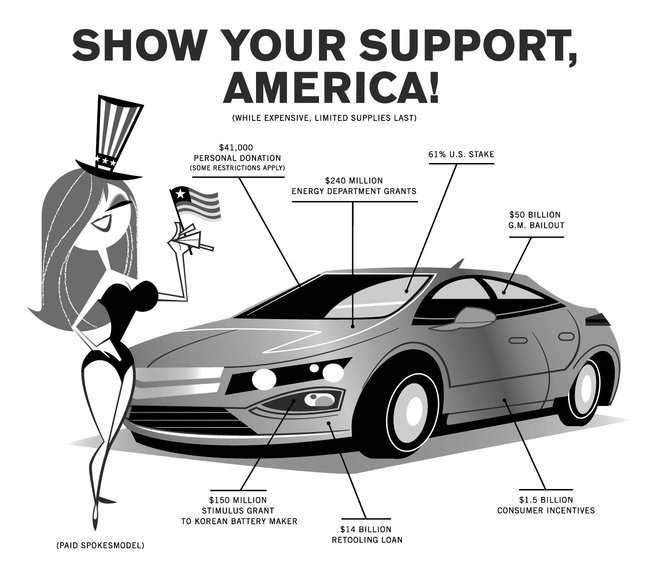

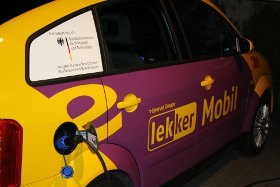


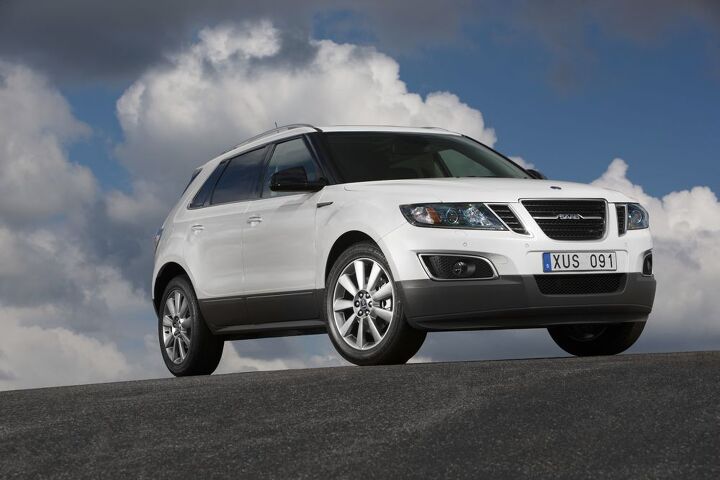



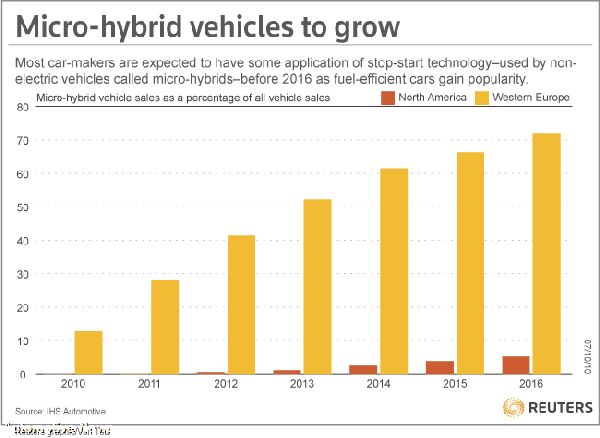


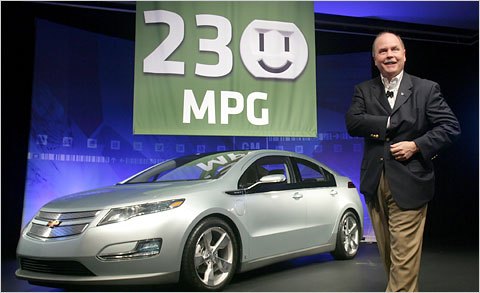
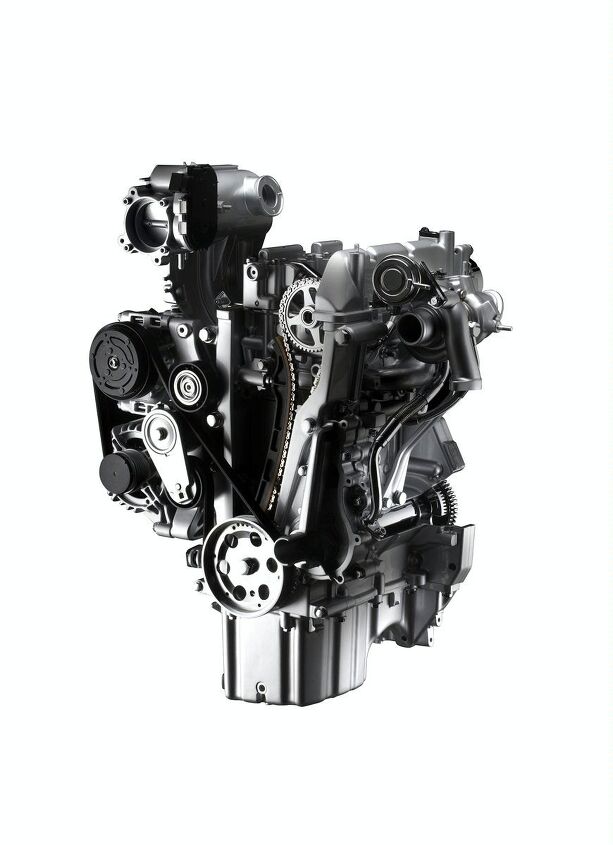

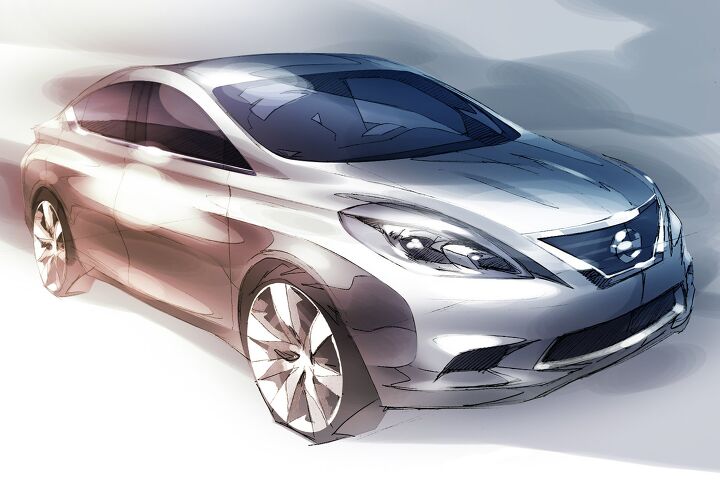








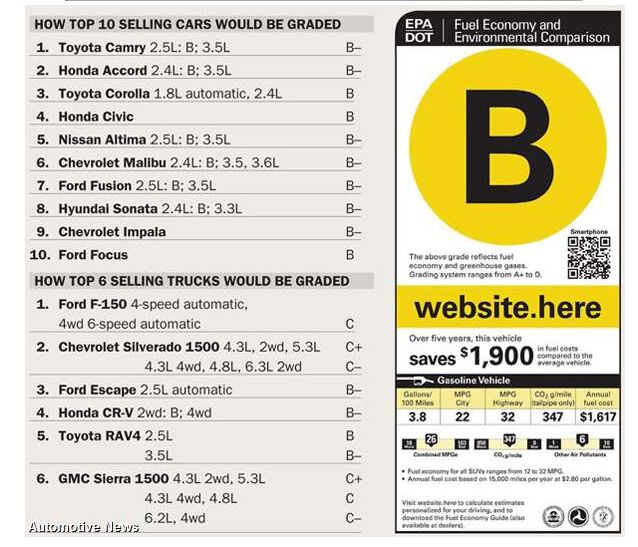
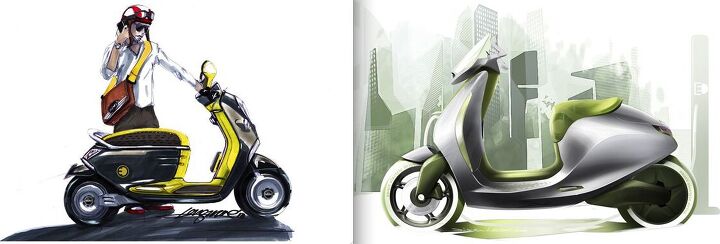





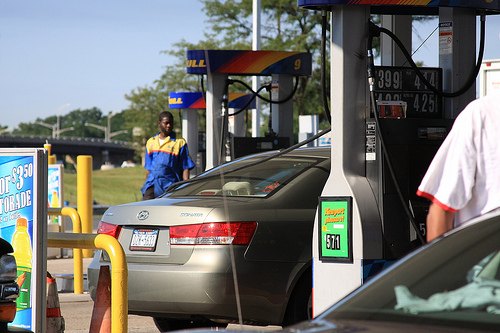

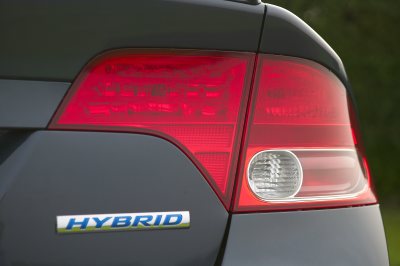
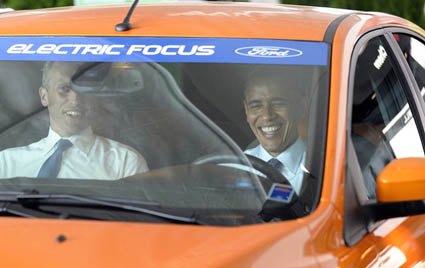


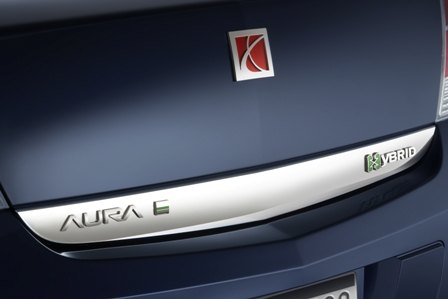


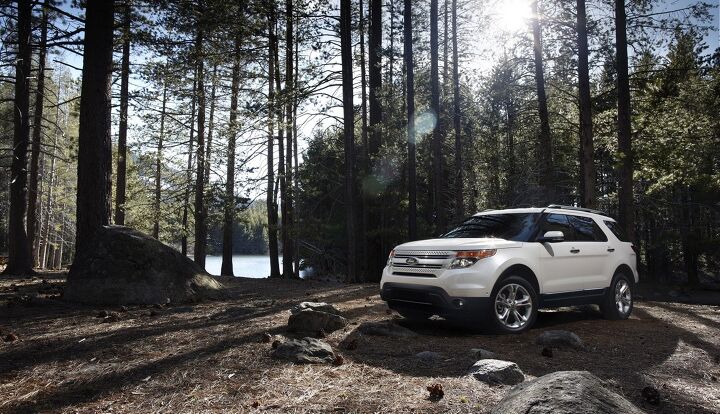

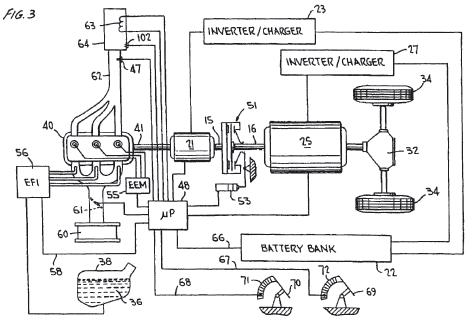
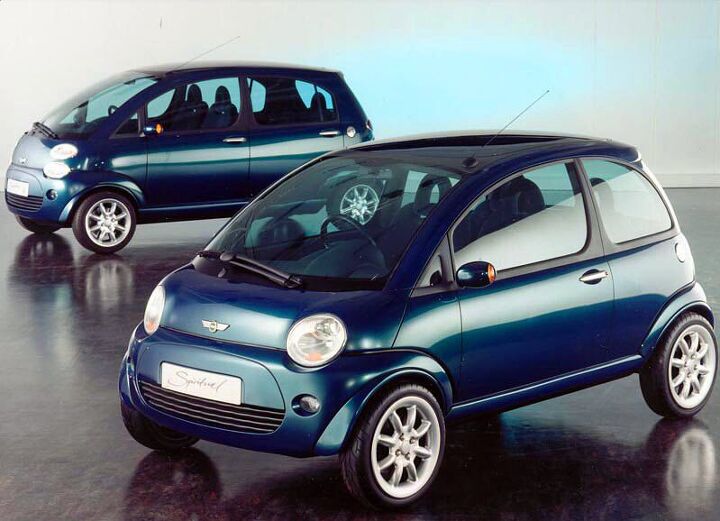
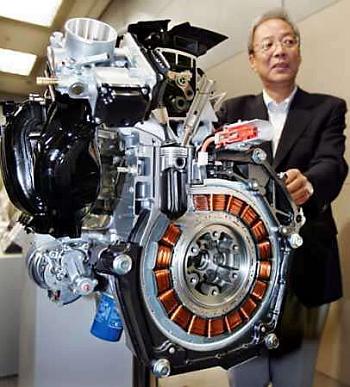
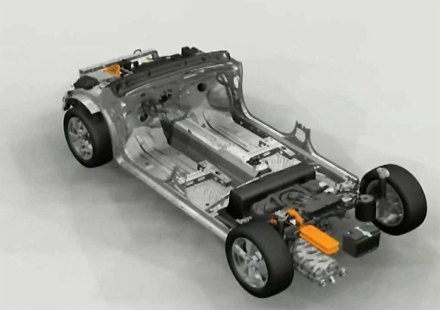


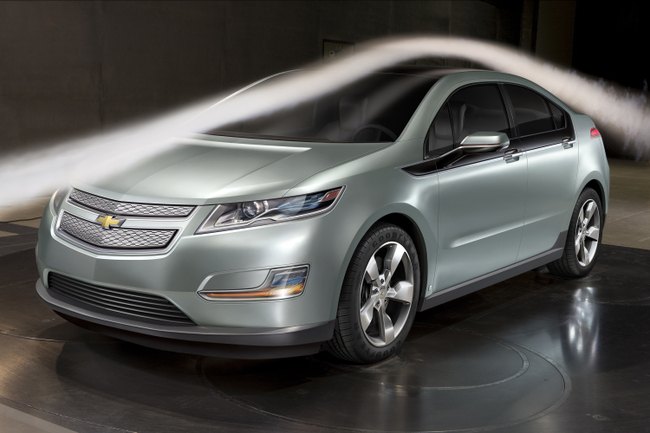














Recent Comments